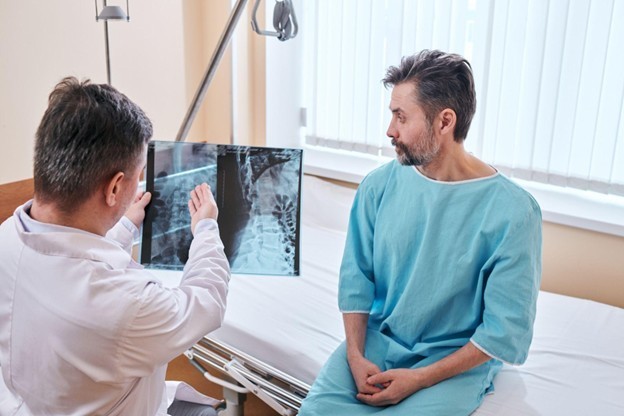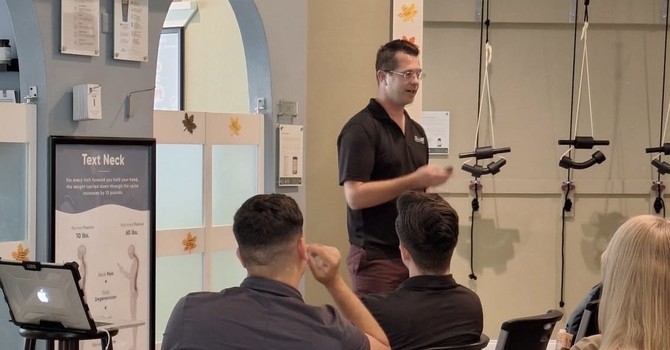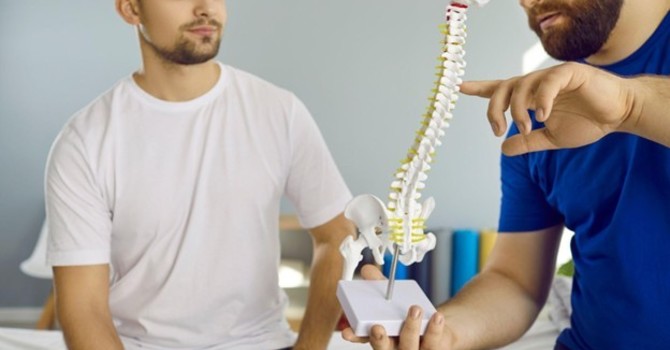
Living with scoliosis affects daily tasks like waking up, sitting, moving, and sleeping due to stiffness, uneven balance, and fatigue, making routine activities more challenging. Beyond the physical challenges, scoliosis touches every aspect of life:
The condition impacts emotional well-being by affecting body image and lifestyle choices, often leading to reduced confidence and limited participation in activities.
Personalized scoliosis care, including targeted therapies, posture training, and guided movement plans, can help improve comfort, function, and quality of life without relying on invasive methods.
When people talk about scoliosis, they often focus on X-rays and measurements. But what's often left out is what living with scoliosis actually feels like every single day. It's not just about the curve in your spine. It's about the choices you make from morning to night because of that curve. It goes beyond medical charts. You'll understand how small moments feel different. From sitting at work to sleeping at night, scoliosis changes the way a person moves, feels, and functions.
Waking Up Is Slower Than It Should Be
People with scoliosis often wake up with tightness in their back, neck, or hips. The stiffness isn't always painful, but it slows you down. Getting out of bed takes more effort. You may need to stretch before even standing up.
The spine has worked hard all night to support your body. Some muscles feel tense, others feel weak. This imbalance causes discomfort. It also makes mornings feel like a workout before the day has even started. Some use tools like traction or guided stretches to make mornings easier. These help reduce stiffness and support smoother movement early in the day.
Sitting Isn't a Break
Sitting at a desk or in a car is tiring when your spine doesn't stack evenly. Most chairs press into the wrong places. After 30 minutes, you may feel tightness in your lower back or tension between your shoulders.
You shift, lean, or twist without even thinking. These small moves try to find relief. But they often cause new aches in other places. Specialized therapies that focus on posture and spinal alignment can help. Some people follow programs that include targeted stretches, gentle adjustments, or the use of spinal blocks to improve their posture in a seated position.
Movements Feel Off Balance
Walking, bending, or lifting often feels unsteady. One side of the body may feel stronger or more tense. Even simple tasks like tying your shoes can take longer.
The spine's curve throws off balance. Over time, your body adapts, but not always in a helpful way. You may lean without realizing it. Or you might turn one shoulder forward more than the other. These habits can lead to long-term muscle strain. That's why many follow routines that teach better movement patterns. These aren't intense workouts. They're focused, low-impact practices that build coordination and help prevent added stress on the spine.
Clothes Don't Sit Right
For many, scoliosis changes the way clothes fit. Shirts may pull on one side. Waistbands twist. One shoulder strap might keep sliding down. These aren't just style problems. They're daily reminders that your body doesn't align with the way clothes are made to fit. That can wear on your confidence.
Some people wear support garments made for spinal alignment. These don't straighten the spine but help it stay supported. When fitted correctly, they can improve comfort and help you move more freely.
Exercise Takes Planning
You don't have to stop moving because of scoliosis. But you do have to be smart about it. Some workouts feel uncomfortable. Others can lead to soreness or fatigue faster than expected. Weight-bearing exercises need caution. So do any routines that involve twisting or heavy impact. A good approach focuses on strength, flexibility, and stability.
Some follow programs that combine stretching, posture correction, and joint support. These help train the spine to hold better form during movement. A balanced plan may include light resistance training, walking or swimming, and guided mobility sessions. The goal is steady progress without strain. With the right plan, many people see improvement in both movement and posture.
Fatigue Comes Quicker
Holding up an uneven spine takes energy. This makes people with scoliosis feel tired faster—mentally and physically. Sitting, standing, and even walking for long periods can drain focus and strength. By afternoon, headaches, back soreness, or even low mood may creep in. It's not just about pain. It's about the effort required to stay upright.
Some manage this scoliosis fatigue with rest breaks, better body positioning, or regular therapy sessions that include massage or traction. These methods don't fix the spine, but they can ease the body's workload and help conserve energy throughout the day.
Sleep Is a Challenge
Sleeping well with scoliosis isn't simple. Finding the right position takes time. Some wake up often during the night. Others shift from side to side trying to find comfort.
If you sleep on your back, your lower spine may feel strained. If you sleep on your side, your shoulders or hips might ache by morning. The spine needs proper support at night. That might include using pillows to maintain a neutral position or sleeping on a mattress that doesn't create pressure points. Consistent care during the day often helps improve sleep at night. When the body feels balanced and supported, it can rest better.
Emotions Are Affected Too
Scoliosis isn't just physical. It affects how people feel about themselves. When your body looks different or feels awkward, it can change the way you see yourself.
This starts early for many. Teens notice how their back looks in photos. Adults might feel hesitant in public settings or avoid activities that draw attention to their posture. These feelings are real. They may not be visible, but they carry weight. That's why emotional support, honest conversations, and guided care matter. Having a team that listens, tracks your progress, and adjusts your care based on your real-life experiences helps you feel seen—not just scanned.
Daily Choices Are Based on Discomfort
Every day decisions often come down to one question: "Will this make my back hurt?" You think twice before lifting a bag, going on a walk, or even choosing a chair. You notice your limits, and sometimes you avoid activities that others do without a second thought.
Over time, this changes how you live. Some stop exercising. Others skip social events. The condition shapes not just the body, but also the lifestyle. Customized care can change that. Support that looks at how you move, where you feel pressure, and what your goals are makes a real difference. Clinics that specialize in scoliosis often provide training and mobility routines designed for your scoliosis daily life.
You don't have to keep living with these limitations, though. Clear Life Scoliosis Reduction and Chiropractic helps you take steps toward a more comfortable day. We build care plans that fit your real needs, not just your X-rays. Contact us today to start your journey toward better movement and relief.

Admin
Contact Me



